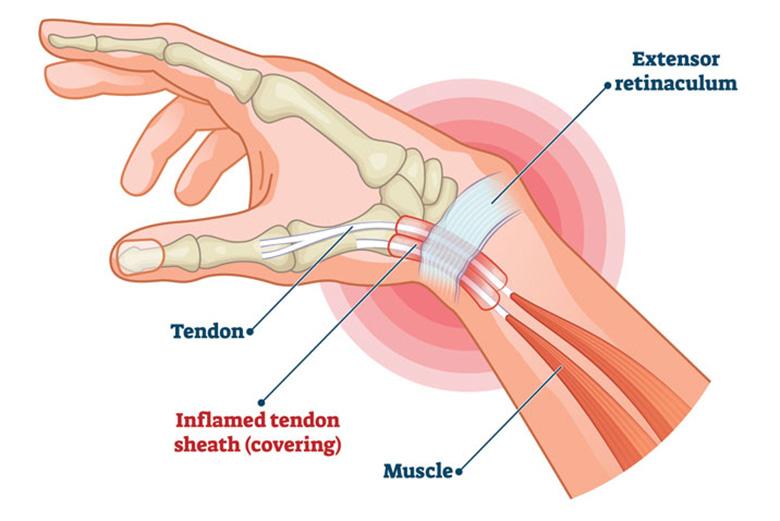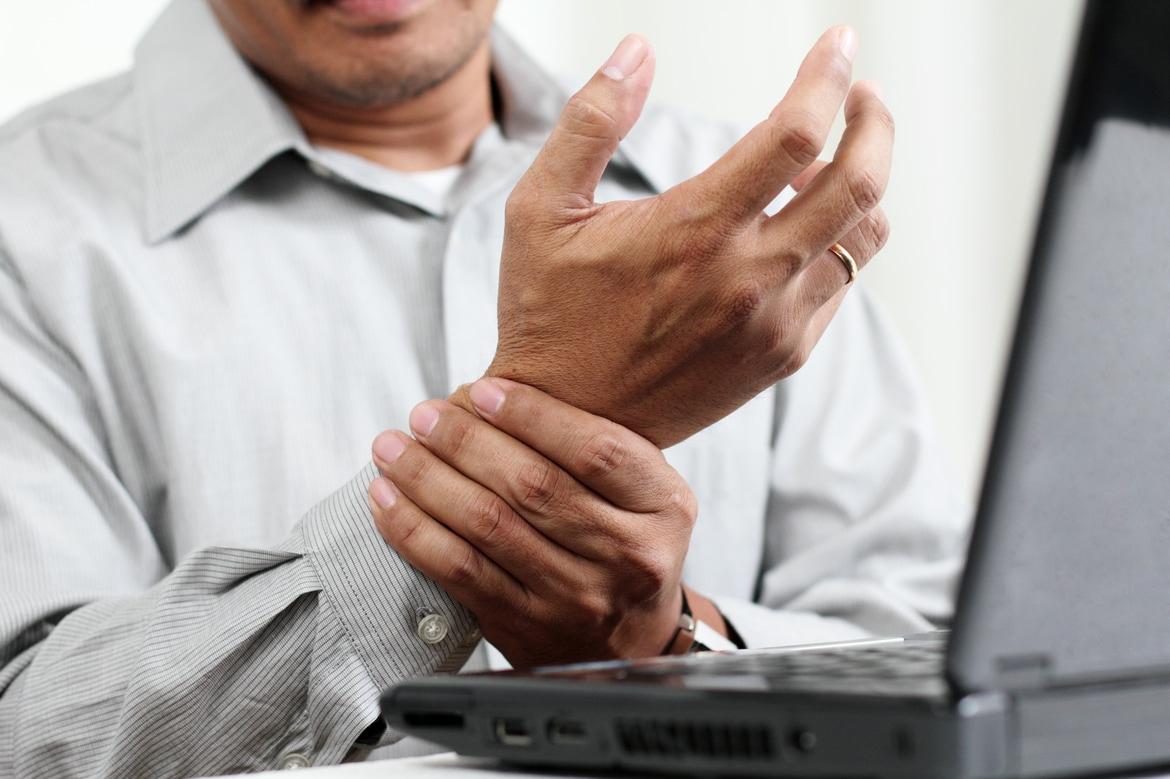
De Quervain's Tenosynovitis
What is De Quervain's tenosynovitis?
De Quervain's tenosynovitis is a painful wrist condition affecting the tendons on the thumb side of your wrist. With repeated movements, the tendons that move the thumb become constricted in a tight tunnel, creating pressure on nerves, which leads to pain and numbness.
What are the symptoms of De Quervain’s tenosynovitis?
De Quervain’s tenosynovitis causes wrist pain which might develop gradually or appear suddenly. The main symptom is pain or tenderness over the wrist joint near the base of the thumb, which may also radiate up the forearm.
Other symptoms include:
- Pain that gets worse with the use of your hand, thumb or wrist
- Pain beginning as an aching sensation and progressing to a point when any movement of the wrist or thumb produces a sharp pain in the affected area
- Numbness along the back of your thumb and index finger
- Swelling near the base of your thumb, where the pain is felt
- A ‘snapping’ sensation or feeling a catch when you move your thumb
- A squeaking sound when the tendons move
It’s best to speak to a doctor if you experience persistent pain with little or no relief from rest, using a cold compress or anti-inflammatory medication.
What causes De Quervain’s tenosynovitis?
De Quervain’s tenosynovitis is usually caused by chronic overuse of the wrist from daily repetitive movements.
It’s a common affliction among mothers from activities such as cradling an infant while nursing, lifting a child into a high chair or car seat, or carrying heavy bags of groceries.
What are the risk factors for De Quervain’s tenosynovitis?
The risk factors for De Quervain’s tenosynovitis include:
- Age. Patients 40 years and above are more susceptible.
- Sex. This condition is more common in women.
- Work or hobbies that involve frequent, repetitive hand and wrist motions.
- Past wrist injuries, as scar tissue can restrict movement of tendons.
- Pregnancy, due to hormonal changes.
- Arthritis.
What are the complications and related diseases of De Quervain’s tenosynovitis?
When De Quervain's tenosynovitis is left untreated, the pain may spread and radiate into the forearm. The pain may also become more intense while performing simple tasks which involve the use of the thumb, such as pinching or grasping.
Over time, it will become difficult to use your hand. You will likely experience increasingly limited range of wrist motion.
This page has been reviewed by our medical content reviewers.
Need help?
For enquiries, please call
+65 6250 0000 (Orchard) or +65 6898 6898 (Novena)
For appointment bookings, please WhatsApp
+65 8111 7777 (Orchard) or +65 8111 5777 (Novena)
 Brain & Spine Care
Brain & Spine Care



